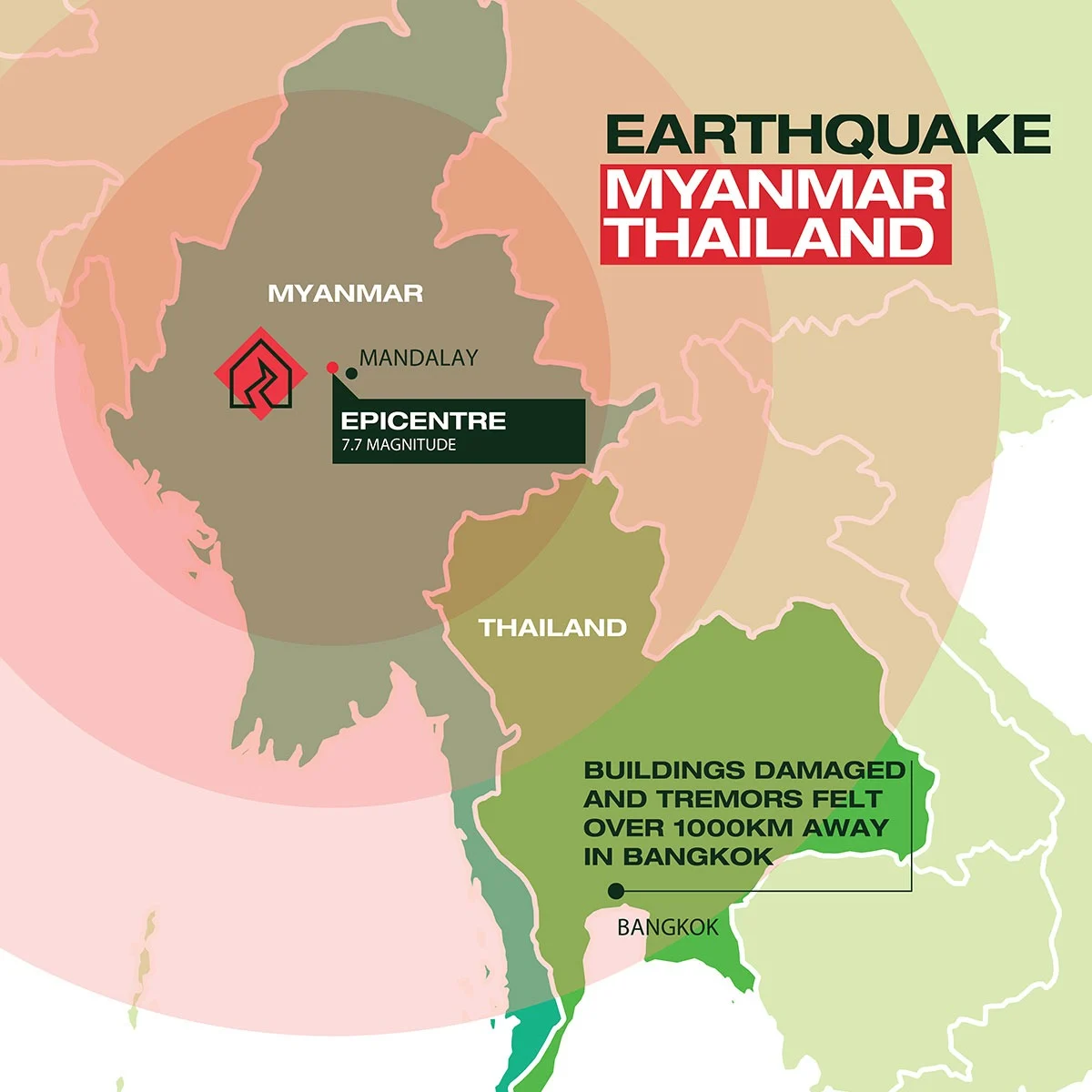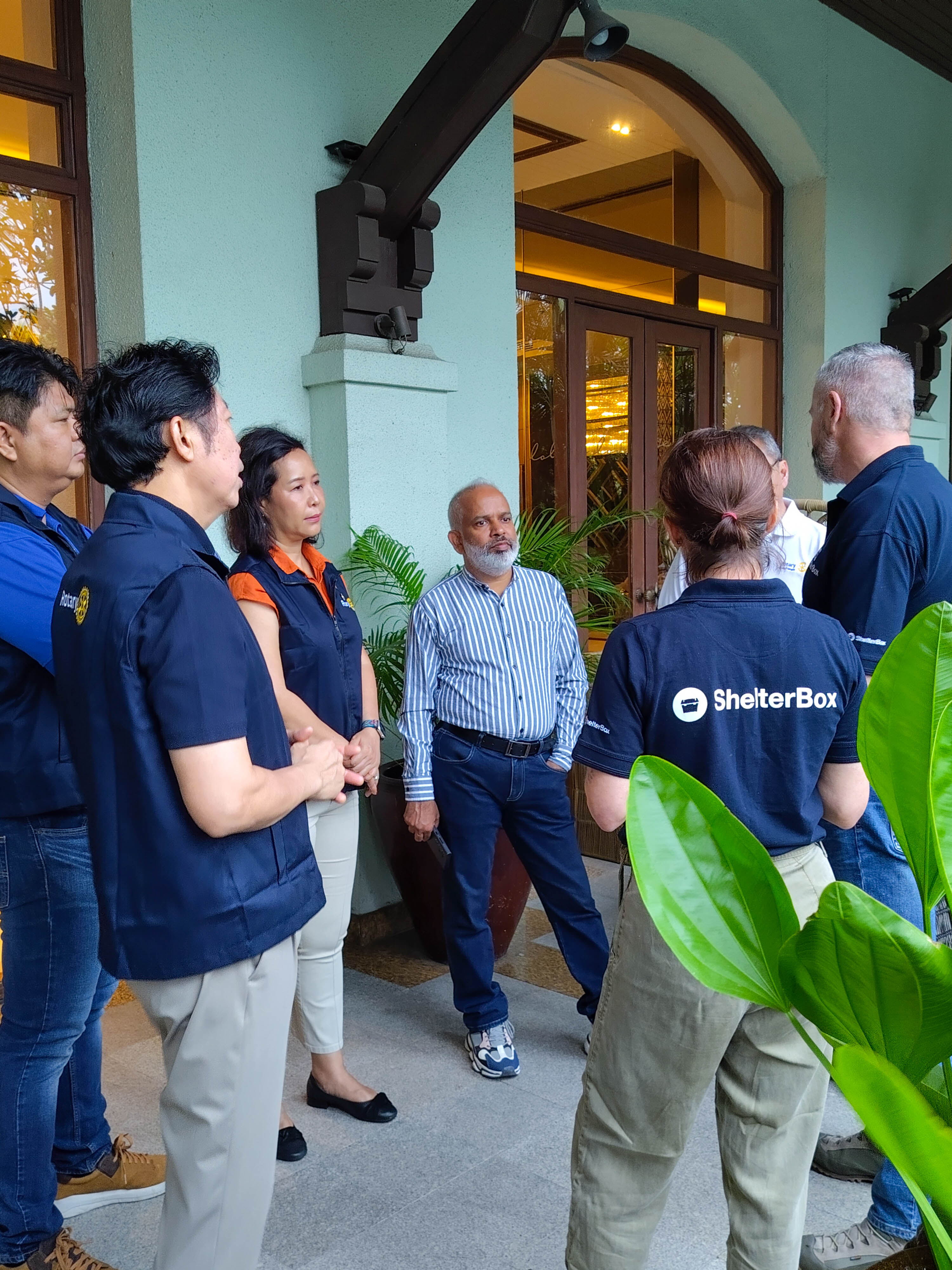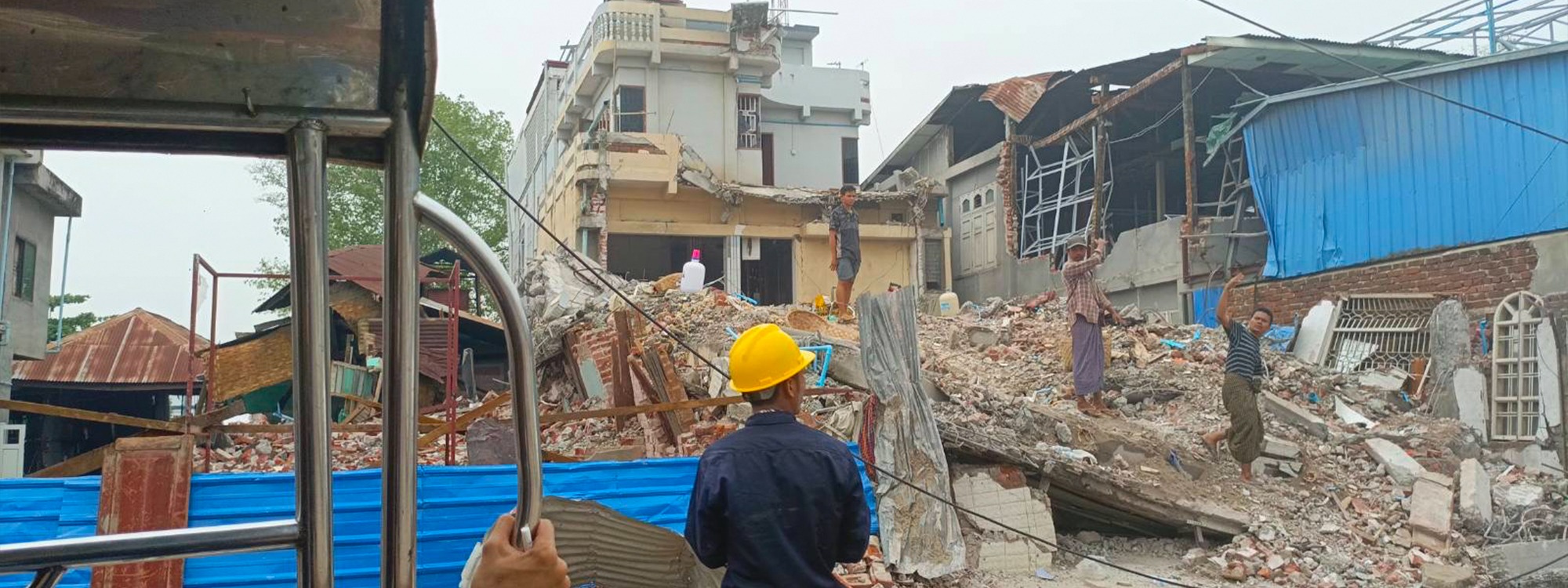
What is happening in Myanmar?
Myanmar has been struck by a devastating 7.7 magnitude earthquake, causing widespread destruction. This is a huge humanitarian crisis.
The earthquake was followed by a significant aftershock of 6.4M approximately 12 minutes later. Tremors were felt as far as Thailand and China when the epicentre of the earthquake hit central Myanmar. Another significant earthquake of 5.5M struck central Myanmar just two weeks after the 7.7 quake.
One million people have been forced from their homes. Hospitals within Myanmar are overwhelmed and extreme temperatures of over 40 degrees Celsius are increasing the risks for communities and responders. With water supplies scarce, the threat of disease is growing.
Across Myanmar, people are missing or feared dead, their homes turned to rubble. For thousands, the only option is to live in damaged homes, flee, or sleep the current conflict makes displacement within Myanmar even more dangerous. Heavy rains are further complicating relief efforts.
People need urgent humanitarian assistance. Aid has started to arrive, but it’s not enough. Vulnerable people urgently need clean water, food, medicine and emergency shelter.
How is ShelterBox responding?
Our teams have been working in both Myanmar and Thailand, to get emergency shelter aid into the hardest hit regions.
The full extent of the damage is becoming clearer. People need clean water, shelter, and essential household items like mosquito nets, water filters and hygiene kits.
People living away from towns and cities in Myanmar are not getting much support and are living out in the open or in damaged shelters. One option we’re looking at is to focus on providing assistance in these rural areas.
We are currently progressing talks with a potential partner on the ground. We’re also working closely with local contacts in Myanmar, alongside other humanitarian organisations and networks like Rotary.
What are the challenges to responding in Myanmar?
It’s an incredibly challenging environment and the humanitarian response will take time. While we want to get aid to people as quickly as possible, it’s important we do this in the right way, so we do no harm to people left vulnerable by conflict and the earthquake.
Myanmar is at war – this adds layers of complexity to an already challenging response. Organisations working in Myanmar need relevant permissions, and travel to affected areas is extremely limited. Importing aid into Myanmar and then moving it to where it is needed is extremely complicated. So, we’re looking at all options, including what we can procure locally.
The political and security environment is complex, but we’re working hard to get emergency assistance to those who need it most.
Your support is crucial in making this response possible.
Donate Now
What difficulties do people face following the earthquake?
In Myanmar, the devastating earthquake has intensified an already dire humanitarian crisis. Hospitals are overwhelmed, struggling to treat the injured. Communication networks are failing, and blocked roads make aid delivery and rescue efforts nearly impossible.
Large numbers of people are forced to sleep outside, afraid of aftershocks and unable to return to their homes. Food supplies are low, with 15.2 million people at risk of food insecurity prior to the quake. Without clean drinking water, the risk of disease is extreme. Medical support is stretched thin, and the lack of shelter means families are exposed to harsh conditions with no protection.
The ongoing conflict is making rescue efforts even harder. People are desperately searching for missing loved ones, but with restricted access, many remain trapped or missing. The recovery of bodies is becoming increasingly difficult as communities struggle to find and bury their dead amidst the destruction.
This latest disaster has pushed the people of Myanmar to the brink. Already surviving through conflict and displacement, their resilience is a testament to their strength – but as conditions deteriorate, survival becomes even harder.
ShelterBox is responding to provide emergency shelter like tents and tarpaulins, as well as water filters, mosquito nets and solar lights. But we still need your support to reach those who need help the most.
Please, if you can, donate today.
Donate NowYour questions about the Myanmar earthquake answered
Myanmar, also referred to as Burma, is in northwest Southeast Asia.
It is bordered by India, Bangladesh, China, Laos, and Thailand.
The countries affected by the earthquake include Myanmar, Thailand, China, Bangladesh, India and Laos.
Earthquakes create massive logistical challenges, and Myanmar’s ongoing conflict makes this disaster even harder to respond to. A temporary ceasefire has been announced to allow help to reach the people who need it.
The ceasefire in earthquake affected areas is due to last until Tuesday 22 April, yet it’s not clear what will happen then or whether it will be extended. Fighting has been reported in some parts, and, in other areas, the war is still ongoing. This makes the situation extremely challenging. More needs to be done to allow aid agencies the access we need.
On top of this, communication networks are down, making it harder to assess the full scale of destruction and coordinate a response. There is also severe damage to infrastructure like power, water, phone networks, internet, airports, roads and bridges.
The shallower the earthquake, the more destructive an earthquake is likely to be. ‘Shallow’ earthquakes tend to be between 0 and 70km deep. This was a depth of just 10km.
Aftershocks are smaller earthquakes that happen after the largest shock of an earthquake sequence.
They are continuing and can make people fearful of returning home. They can continue over a period of weeks, months, or years, and the risk of further destruction remains high.
Before the earthquake, Myanmar was already facing one of the most severe humanitarian crises in the world.
The country has the fifth highest number of people in need globally, with over 20 million people struggling to survive. Millions are struggling to survive as active fighting continues, making daily life dangerous and uncertain.
Ongoing conflict had already displaced 3.5 million people, forcing families into temporary shelters and contributing to economic crisis.
Now, with more homes destroyed, people are living in unstable buildings or outside in the open, the crisis is dramatically worsening.
Thousands will remain displaced, with nowhere to go, without urgent humanitarian assistance.
Why support ShelterBox?
With over 25 years of experience, we are experts in emergency shelter after disaster.
From the 2023 earthquakes in Türkiye and Syria, to responding to the magnitude nine Tohoku earthquake and tsunami in Japan in 2011, we have provided shelter to over 2.5 million people so far.
In these uncertain times, your support is more valuable than ever.
We won’t stop until we see a world where no family goes without shelter after disaster. Will you help us?


